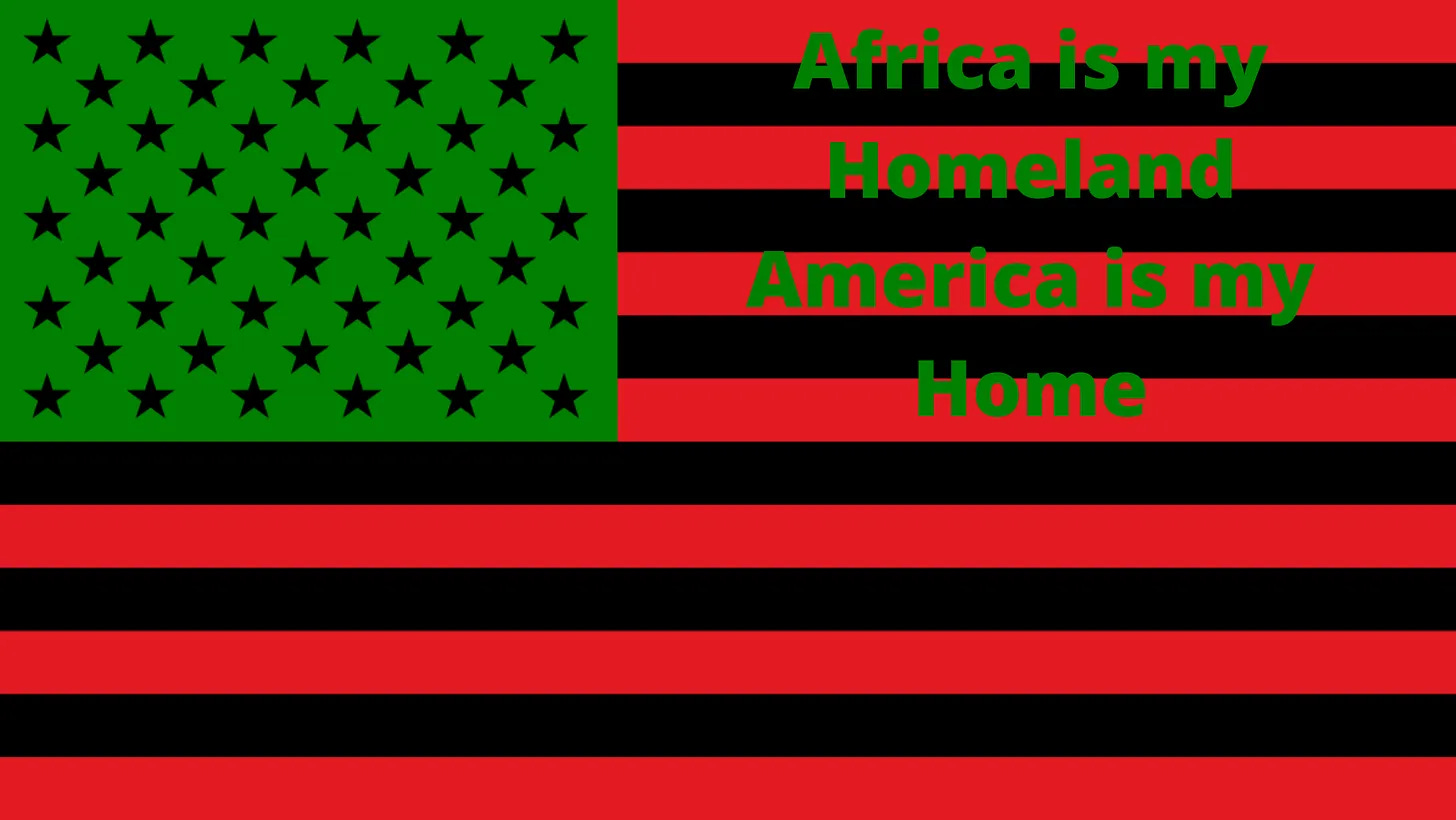The History of Internments and Reparations
The rounding up of non-white people for internment happened before and can happen again.
Issue #670 Today In Black History, Wednesday, July 17, 2024
Help us to reach our July 2024 goals: +100 total new subscribers, including +15 paid subscribers:
Please share and subscribe to help us grow our publication.
If you like us, REALLY like us, please click the “Like” button at the end of this post!
Also, please scroll to the end of this post for other ways to financially support us and We Are Speaking with our books and courses.
We appreciate your support!
Today’s Black History WOW!
Japanese American Internment Camps 1942-1945
Sections of this article are from a previously published “We Are Speaking" article.
Potential Internment Policies from a 2nd Trump Administration
Donald J. Trump, a convicted felon, adjudicated rapist, proven business fraudster, verifiable liar, and official Republican nominee for the 2024 presidential election has declared that one of his first acts as a dictator from day one will be to round up brown and Black immigrants (illegal or not) from what he considers sh*thole countries and put them in internment camps.
His administration has done this before: under the direction of one of his top advisors, Stephen Miller, thousands of families were captured at the border and separated into internment camps. Children and babies, separated from their parents, were kept in metal cages with no blankets, no toiletries, and no safety supervision.
The History of Japanese Internment Camps
On December 7, 1941, which was called “…a day which will live in infamy…” by President Franklin D. Roosevelt, the Imperial Japanese Navy Air Service conducted a surprise military strike against the United States by bombing the naval base located at Pearl Harbor, Honolulu in the U.S. Territory of Hawai’i.
On February 19, 1942, President Roosevelt signed Executive Order 9066, supposedly to prevent espionage on America at its shores. From 1942 through 1945, it was the official policy of the United States government that people of Japanese descent, including American citizens, would be incarcerated in several isolated internment camps.
European-American citizens and other descendants of Germany or Italy were not subjected to the same treatment although the United States was also at war against those countries.
Even before the Executive Order was signed, the U.S. Navy removed citizens of Japanese descent from Terminal Island near the Port of Los Angeles.
Just a few hours after the Pearl Harbor attack, the FBI rounded up 1,291 Japanese American community and religious leaders.
There was no evidence of espionage by these American citizens, and their assets were frozen as they were transferred to prison camps in Montana, New Mexico, and North Dakota. Most of the arrestees were not allowed to notify their families and were forced to remain in the camps for the entirety of the war.
In February 1942, several U.S. political leaders, including California Governor Culbert L. Olson, and California State Attorney General (and future Chief Justice of the Supreme Court) Earl Warren, declared that all people of Japanese descent, including American citizens, should be removed.
The FBI also searched the private homes of thousands of Japanese Americans on the West Coast, seizing any items that were considered to be contraband.
In Hawai’i, where 1/3 of the population was of Japanese descent, 1,500 people were sent to prison camps on the U.S. mainland.
In March 1942, the civilian organization War Relocation Authority was set up to oversee the relocation efforts, and Milton Eisenhower, the younger brother of Dwight D. Eisenhower, was appointed as the administrator.
However, Eisenhower resigned less than 90 days later in protest over the incarceration of innocent Japanese-American citizens.
The Japanese “One Drop” Rule
In the United States, starting around the end of the 17th century, anyone with any amount of African ancestry was considered to be “Negro” or “Black.” This became known as the “One Drop Rule” that designated people with even about 1/16th African ancestry to be legally considered Black and subject to the discrimination and suppression Blacks experienced, no matter how “white” they may have looked.
Although not officially called a “One Drop Rule,” the War Location Authority declared that anyone with 1/16th of Japanese ancestry would be evacuated to the new internment/prison camps. Over 17,000 children under the age of 10 (including actor and activist George Takai) and several thousand elderly and disabled Japanese Americans were included in the evacuation efforts.
The Internment of Japanese Canadians
Just as in the United States, racism and discrimination against Asians had existed in Canada since the late 19th century when many Japanese and Chinese immigrated to the western part of that country.
From 1942 through 1949, the Canadian government forcibly relocated and incarcerated over 22,000 Japanese Canadians—over 90% of the Japanese Canadian population—citing “national security.”
Canada also declared war against Japan at about the same time as the United States and deported many Japanese Canadians to Japan, even those who were Nisei (2nd generation) and Sansei (3rd generation) Japanese Canadians.
Japanese Canadians were stripped of their property, businesses, and personal belongings, and were forced to use the proceeds from these seizures to pay for their own incarceration.
Reparations are approved for some Americans and Canadians subjected to discrimination, but not all
Recently, the State of California has declared that financial reparations will be paid to Black Californians who can prove direct lineage to their enslaved ancestors. Although the details are still forthcoming, it is estimated that Black Californians could receive over $225,000 each to help mitigate the effects of discriminatory policies over the 16 generations that people of African descent have experienced.
Nationwide reparations for Black Americans is still a hotly debated issue, and Black Americans can’t depend on receiving reparations any time soon.
However, in 1976, U.S. President Gerald R. Ford officially repealed Executive Order 9066. In 1988, Congress issued a formal apology and passed the Civil Liberties Act, awarding $20,000 each (about $53,000 in today’s dollars) to over 80,000 Japanese Americans and their descendants as reparations for their treatment during World War II. $53,000 is hardly enough compensation for the financial and psychological losses suffered by those sent to the internment camps.
Also in 1988, the Canadian government issued an apology to Japanese Canadians and their descendants and issued CND$21,000 and also restored Canadian citizenship to Japanese Canadians who were deported to Japan.
Black Canadians and their descendants are also waiting for reparations, as are the descendants of Indigenous Canadians for the horrible policies enacted against them in the 19th and 20th centuries.
Yes, it can happen here again.
There is a saying attributed to Winston Churchill: “Those who fail to learn from history are doomed to repeat it.”
This is one of the reasons “We Are Speaking” concentrates on Black History, as well as brown and Indigenous history in America and elsewhere.
It is also one of the main reasons why we are fighting the efforts of the right wing to ignore and erase those parts of our history.
We have to continue to tell and teach all of history and insist upon appropriate reparations for the ADOS (American Descendants of Slavery) who contributed to the wealth-building of this country in the 17th, 18th, and 19th centuries.
Today In Black History
In 1794, Richard Allen founded the Mother Bethel African Methodist Episcopal Church in Philadelphia.
In 1862, Congress authorized President Abraham Lincoln to accept Black men for military service as laborers. The Second Confiscation Act freed the slaves of all rebels.
Our paid subscribers are encouraged to discuss this post in our W.A.S. Chat Community.
Join Pamela Hilliard Owens’s subscriber chat
Available in the Substack app and on the web
You are also welcome to view “We Are Speaking” in Substack Notes. You can also read other Substack publications without subscribing to them when you join Notes.






